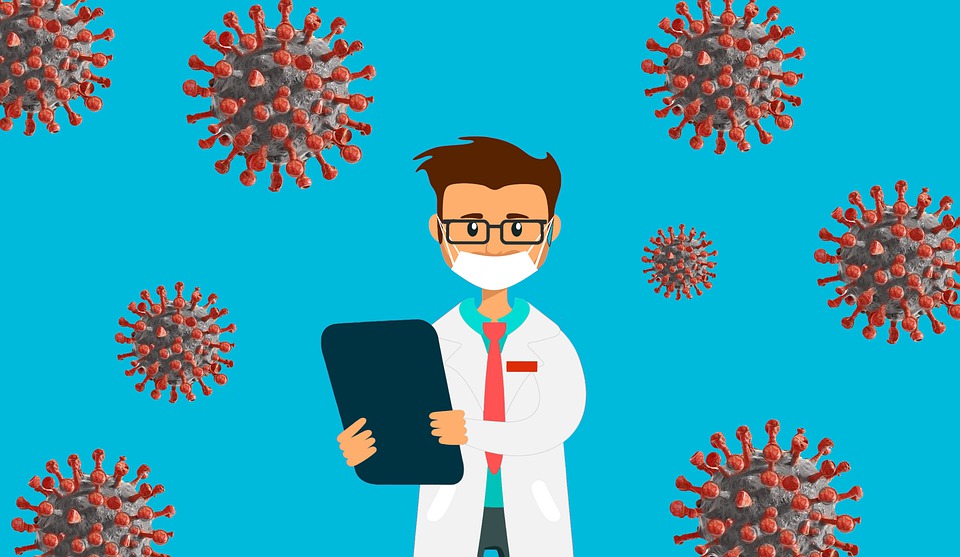As more and more people are getting (and recovering) from COVID-19, we realize that symptoms can linger and reoccur for weeks, months, or potentially years afterwards. As symptoms reappear it can be difficult for patients to assess what warrants a follow up visit with a healthcare professional. Thankfully, remote patient monitoring offers hope in the fight against Covid. Telehealth, and more specifically remote patient monitoring, ensures patients don’t have to make that decision on their own. Technologies that provide real-time biometric data to evaluate patients remotely between visits are proving effective in this regard. Devices like pulse oximeters, spirometers, blood pressure monitors, and glucometers allow healthcare practitioners to remotely monitor patients as they recover from home, instead of in their office or hospital.
These digitally connected, noninvasive technologies allow doctors to monitor vital measurements like blood pressure, oxygen saturation, temperature, pulse rate, weight, and other relevant information to diagnose and treat patients as symptoms progress.
Lingering Effects on Patients
Although COVID-19 is seen as a disease that primarily affects the lungs, it can also damage many other organs. Remote patient monitoring and accompanying devices are extremely critical right now as recent studies have connected COVID-19 to long-term health issues including heart, lung, kidneys, and even brain damage. Organ damage may lead to health complications that linger after COVID-19 illness.
According to a study by the Mayo Clinic, common signs and symptoms of COVID-19 that can linger over time include:
- Fatigue
- Shortness of breath or difficulty breathing
- Cough
- Joint pain
- Chest pain
- Memory, concentration or sleep problems
- Muscle pain or headache
- Fast or pounding heartbeat
- Loss of smell or taste
- Depression or anxiety
- Fever
- Dizziness when you stand
- Worsened symptoms after physical or mental activities
By utilizing an RPM program including clinical monitoring services, healthcare professionals will be alerted anytime patient data is out of the normal range, triggering an immediate wellness check between doctor and patient. Continuous monitoring can help to improve outcomes for patients and limit recurring acute symptoms.
Benefits of Monitoring Patients at Home
We have all heard about hospitals being inundated with patients mainly due to COVID-19 spikes. Nurses and staff are overworked and stressed. By providing care via remote patient monitoring and scheduled telehealth check-ins, providers can reduce re-admissions and strain on hospital staff. This is a key component in the evolving fight against COVID-19 and allows hospital staff to effectively care for and treat those patients that truly need it.
Additionally, providers get an inside peek into a patient’s home environment during telehealth visits. This allows them to provide additional insight to their care plan that they wouldn’t otherwise have knowledge of. For instance, if a patient is having pulmonary issues and the doctor notices something in the home that could potentially cause breathing issues, it can be addressed immediately. During in-person visits, doctors rely on patients answering questions truthfully to get this information. The video along with the biometric data provided by the remote patient monitoring devices gives a more complete picture to what is actually happening.
Finally, remote patient monitoring allows patients that live in rural areas or have difficulty travelling to get the care they need without having to worry about riding hours in a car or trying to figure out how to get to the physician’s office. More patients receive the care they need without wasting precious time.
No Time Like the Present
Adoption of RPM and associated devices was gaining traction and increasing in usage prior to 2020, including blood pressure cuffs, glucometers, pulse oximeters, and medication adherence.
Once COVID-19 invaded our lives, the integration of RPM into healthcare treatment programs was expedited to say the least. Even so, there continues to be misconceptions among some healthcare professionals about remote patient monitoring.
As the COVID Pandemic continues to evolve, providers must continuously review methods to treat patients effectively and efficiently. New legislation and guidance from the CDC will dictate certain aspects but providers should be proactive in their response. RPM allows them to do just that and offers a glimpse of hope in this challenging fight against Covid.
Implementing an RPM Program
The first step in implementing an effective RPM program is finding the right partner.
If you are considering implementing RPM, have questions, or are just looking for more information, please contact us. With over 12 years of providing innovative healthcare solutions, RemetricHealth has extensive knowledge in remote patient monitoring and offers various options tailor-made for your organization. We are here ready to help you every step of the way.

Leave A Comment